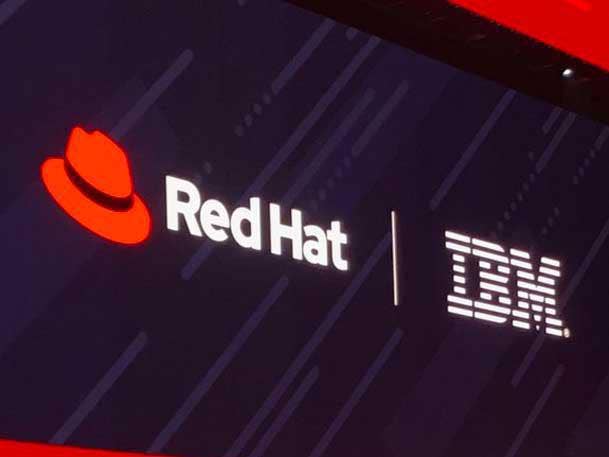Red Hat Marketplace Delivers Ingredients For Rapidly Building Cloud-Native Solutions
A collection of more than 60 certified open source components are already available through the new platform developed with parent IBM. ‘Red Hat Marketplace is the grocery store for app developers to go pick the ingredients they want to build on top of OpenShift,’ IBM Cloud Ecosystem leader Cameron Clayton tells CRN

Red Hat’s new open source software market aims to make it easier for solution providers to cobble together dynamic applications that can run across hybrid cloud environments.
The new Red Hat Marketplace offers enterprise customers and partners open source tools curated and validated by the industry’s largest open source player to use in assembling cloud-native solutions orchestrated by OpenShift, Red Hat’s leading Kubernetes platform, Cameron Clayton, general manager for IBM Cloud ecosystem, told CRN.
“Red Hat Marketplace is the grocery store for app developers to go pick the ingredients they want to build on top of OpenShift,” Clayton said.
[Related: Red Hat OpenShift 4.5 Adds Virtualization, Edge Support]
Stocking the online store a week after launch are more than 60 solutions from popular ISVs, including Anchore, Cockroach Labs, CognitiveScale, Couchbase, Dynatrace, KubeMQ, MemSQL, MongoDB, and StorageOS.
That assortment of Kubernetes add-ons for security, storage and monitoring, as well as popular databases, will speed the work of partners provisioning and deploying cloud-native solutions for their enterprise customers, Clayton said.
“The Red Hat Marketplace provides a one-stop location for ISV products to be made available for consumption by any customer,” Joe Dickman, senior vice president of Vizuri, a Red Hat Apex partner based in Virginia, told CRN.
“It simplifies the buying experience for many enterprise organizations and allows them to easily locate certified software from which to build out their next-generation solutions,” Dickman said.
The marketplace will particularly benefit consultancies like Vizuri that are focused on assisting organizations modernize their infrastructure while leveraging legacy investments. At the same time, it could adversely affect traditional fulfillment channel partners whose businesses rely on providing purchasing arrangements, Dickman added.
Red Hat Marketplace stems from the commitment IBM CEO Arvind Krishna articulated when Big Blue acquired Red Hat to not only invest in facilitating hybrid infrastructure, but to help enterprises “really flourish” in a software landscape increasingly defined by open source communities, Clayton said.
“The company that commercialized Linux for the enterprise is now commercializing the marketplace for the enterprise to access a myriad of open source software,” he told CRN. “No one else has this kind of scale of enterprise-ready software.”
IBM engineers, who have years of experience running a cloud software store, lent Red Hat a hand in building its own marketplace over the last 10 months and operating it on the back-end of IBM Cloud infrastructure. But Red Hat Marketplace is entirely a Red Hat product, Clayton emphasized.
“Red Hat brings innovation and the open source community’s ISVs into the catalog,” Clayton said, “and the IBM team has helped build that at enterprise scale.”
IBM estimates only some 20 percent of eligible workloads have migrated to cloud—the rest still run on commodity servers and mainframes in on-premises data centers or colocation facilities around the world. Enterprises want to leverage container-tech and Linux-based open source solutions to move those remaining on-premises workloads to multiple clouds.
“It’s not realistic companies are only going to have one cloud going forward,” Clayton told CRN.
OpenShift is driving multi-cloud adoption by providing a management layer that allows applications to run in and across any environment, he said.
Red Hat Marketplace is one piece of a $1 billion dollar investment IBM has pledged through a fund established to support its ecosystem in delivering hybrid cloud transformations around the OpenShift platform, Clayton said.
Krishna “is really committed in a huge way to how to we partner and generate value for our partners more actively, more generously, and at a higher velocity,” Clayton said.
The marketplace can benefit the channel in multiple ways, he added.
Solution providers that have developed their own IP, an emerging trend in the channel, can distribute that technology through the new marketplace.
Or they can take advantage of Red Hat Marketplace Select, a white-label option allowing them to brand their own marketplaces for customer-facing and internal operations.
“We’re seeing a lot of interest from channel partners to take that and brand it,” Clayton said, adding some 15 partners have already started doing that.